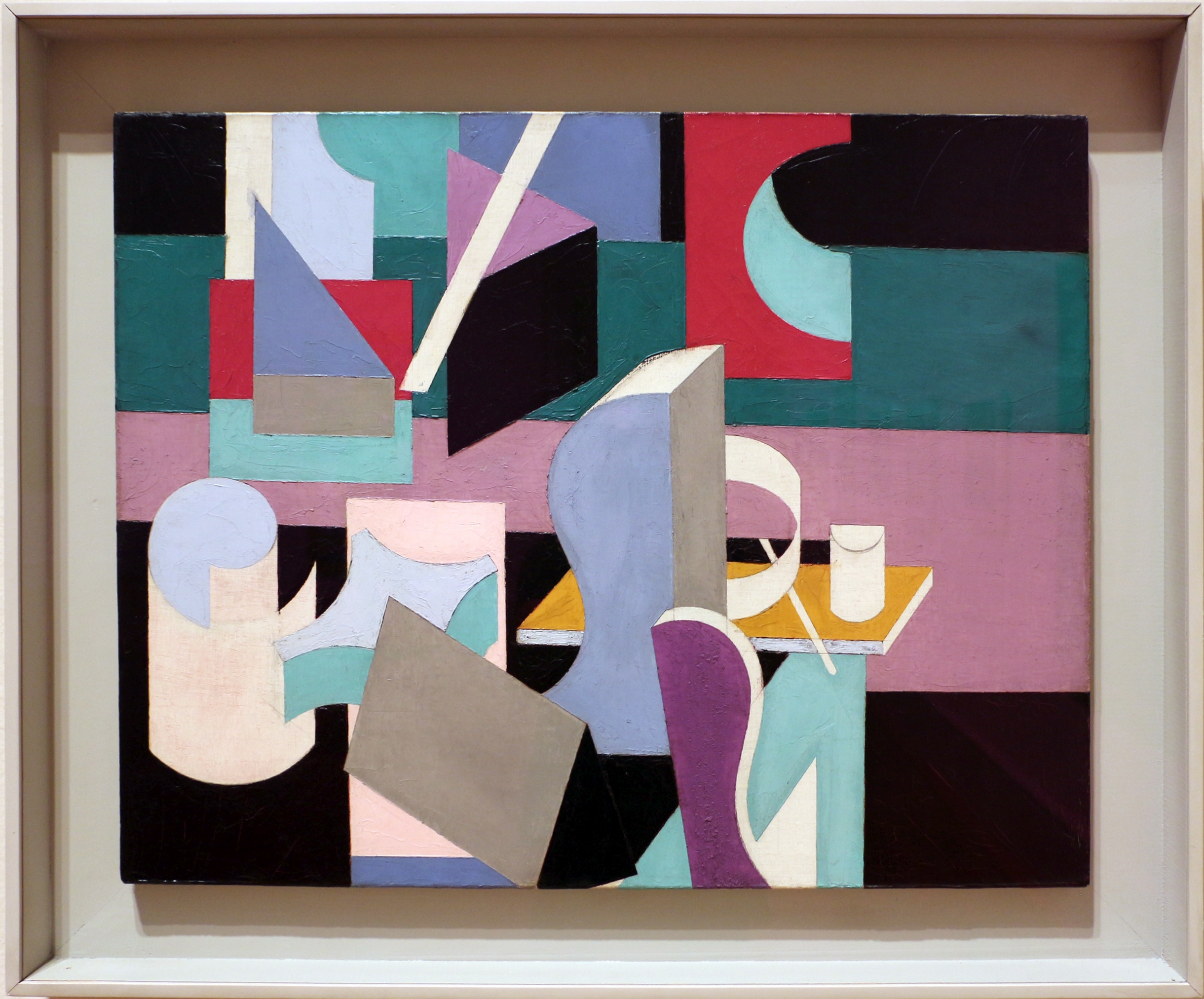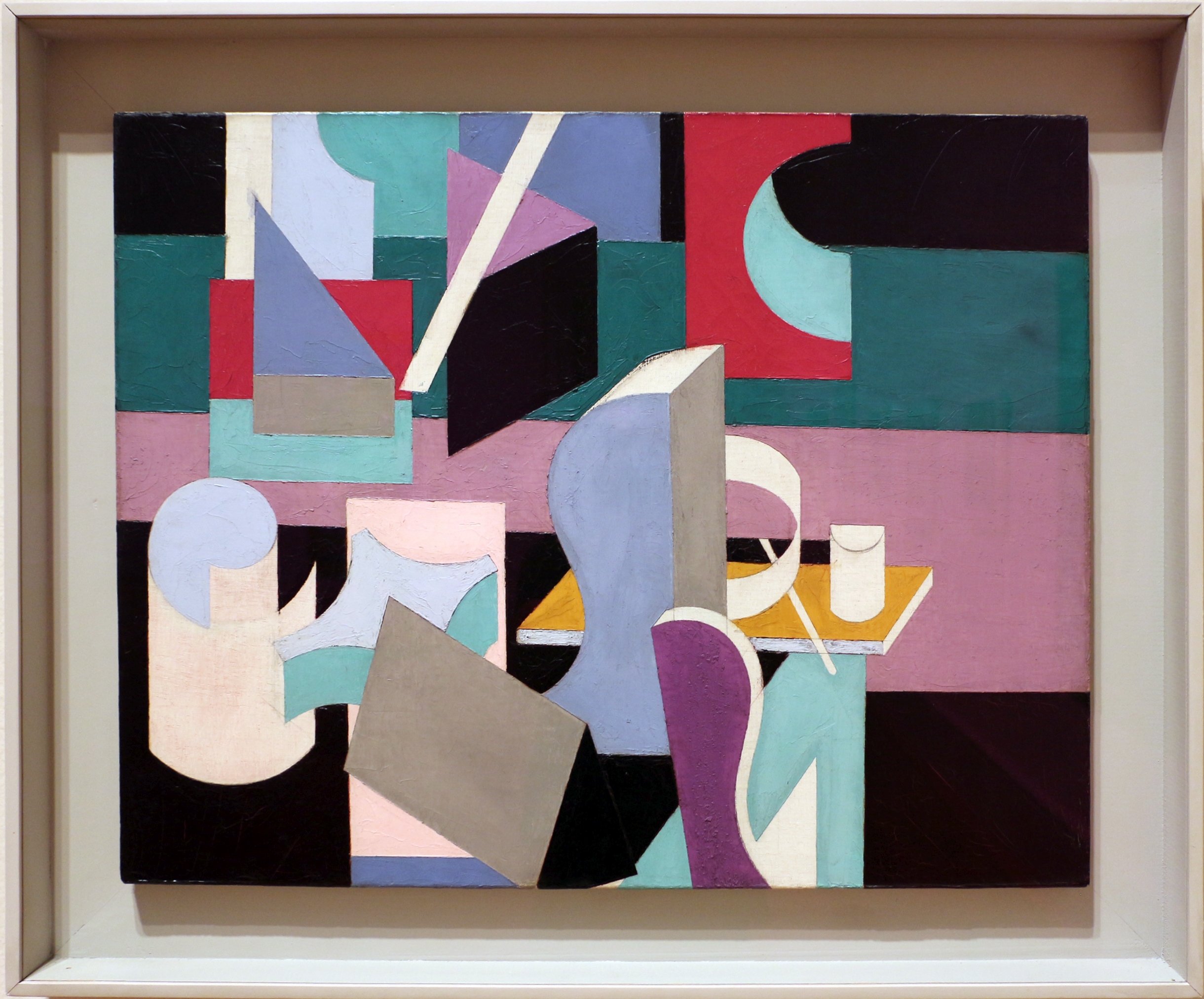Like others of writer Hemingway lost generation—artists who left the United States at the start of the 20th century in search of a more bohemian and modern lifestyle—Patrick Henry Bruce went to Paris in 1904 and remained there for more than thirty years. His first heroes were Henri Matisse and Paul Cézanne. His early work explored the sights and forms of France with a coloristic exuberance inspired by Matisse and a search for structural rigor emulating Cézanne.
After World War I, Bruce began painting still life, a solitary and contemplative genre, concentrating on the objects gathered in his spartan rooms near the Ecole des Beaux-Arts. His subject matter has been identified from photographs of the apartment. Here, on the tilted-up top of an antique table, Bruce has arranged carpenter’s tools, scrolled pieces of wood, and architectural moldings (he supported himself by dealing in antique furniture), and possibly a piece of fruit. In emulation of Cézanne, who advocated rendering nature by means of simple shapes, Bruce reduced his commonplace objects to abstract geometric forms. These he painted as weighty solids that nonetheless seem to interact dynamically. He constructed them with carefully calibrated perspectival accuracy but undermined their stability by showing each of his forms from a different vantage point; they threaten to tumble over one another and spill out of the picture space. Bruce painted meticulously, using careful gradations of color. Here he employed a whole spectrum of blues, augmented with deep green, a salmon hue, and black and white. Preoccupied by these color relationships, Bruce painted layer over layer. As he revised one area he saw the tonal balance of the whole composition shift, obliging him to alter other areas (for example, all the black areas in this painting were previously blue), resulting in a thickly built up surface.
By the 1930s lack of recognition, increasing isolation, and the elusiveness of the perfection he sought in his art drove Bruce to despair. He destroyed all but about 100 of his works and in 1936, shortly after returning to New York, he committed suicide. His tragic intensity and his belief that his art could provide an opening onto the realms of the imagination are revealed in a poignant letter written in 1928 to his friend, the novelist Henri-Pierre Roché: “I am doing all my traveling in the apartment on ten canvases. One visits many unknown countries that way.”
- Clinton Pittman
P.S. Read here how cubism changed during the 20th century!


 Patrick Henry Bruce
Patrick Henry Bruce